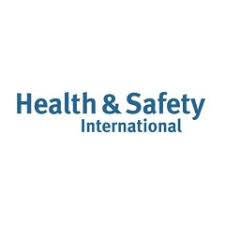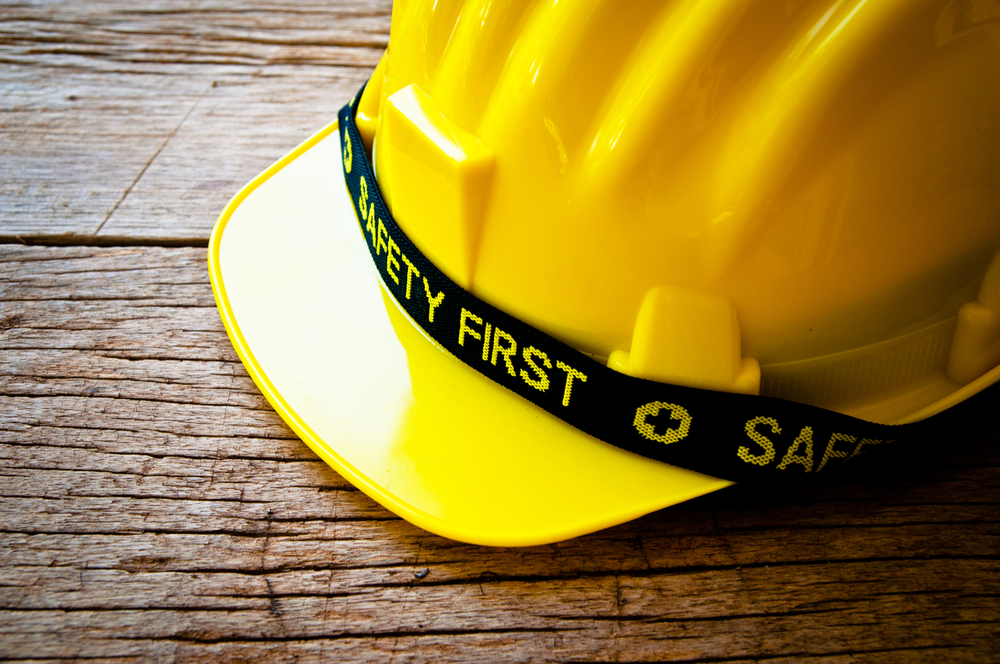News Post
The History of the Health and Safety at Work Act 1974
What is the Health and Safety at Work Act 1974? The Health and Safety Executive, a UK government agency with the statutory duties of encouraging, regulating and enforcing workplace health, safety and welfare, describes the Act as ‘the primary piece of legislation covering occupational health and safety in Great Britain’.
The Act is published in full on legislation.gov.uk, where it is referred to as the Health and Safety at Work etc. Act 1974. However, the Act has also been given many other names in shorthand – including HSWA, the HSW Act, the 1974 Act and HASAWA.
Whatever people choose to call it at any given time, it is a historically pioneering piece of legislation covering employer duties towards employees and members of the public, employee responsibilities to both the employee and their co-workers, and duties certain self-employed people have towards both themselves and others.
The HSWA can be seen as the culmination of decades of piecemeal legislation that, though intended to ensure a healthy and safe working environment for many workers, left certain industries much more thoroughly regulated than others.
There was therefore an obvious need for a far-reaching piece of health and safety legislation that would help to standardise the legal duties of employers, employees and self-employed workers alike with regard to ensuring a safe and healthy working environment.
This article will look at how UK health and safety policy has evolved since the introduction of the Factory Act 1802 (which was sparked by concerns about the working conditions in cotton mills) and the eventual arrival of HSWA, which has had significant implications for the UK workforce.
These have included the legal requirement – still in place – for all UK organisations with more than five employees to provide a customised health and safety policy the company’s employees are able to view.
Please contact our health and safety consultants to learn how they could guide you as you undertake all of the tasks required for writing and operating this policy – from making risk assessments to completing workplace inspections.
What are the main points of the Health and Safety at Work Act 1974?
The Health and Safety at Work Act places the duty on employers ‘to ensure, so far as is reasonably practicable, the health, safety and welfare at work of all his or her employees’. This covers employer responsibilities of undertaking maintenance work, training employees as and when necessary and establishing systems to ensure the safe handling of substances of materials.
While this is all detailed in Section 2 of this piece of legislation, Section 3 specifies that these legal responsibilities must also account for the welfare of people visiting the premises. This section also states that the employer must produce a written health and safety policy detailing how they will both manage risks and satisfy the legal requirements specified by HAWA.
In any case, the ‘as far as reasonably practicable’ provision permits employers to withhold adjustments if their beneficial effect on workplace health & safety would not be sufficiently strong to warrant the financial expenditure required to implement the changes. This does not, however, justify employers neglecting their legal duties simply due to the company’s financial situation.
Meanwhile, under Section 7 of HAWA, employees are required to adhere to employers’ instructions pertaining to health and safety regulations. They are also expected to act in a way that does not pose a danger to themselves or anyone else in the workplace.
The Act also gives everyone – including employers, employees and members of the public – the duty not to interfere with health and safety measures.
Traditionally, this legislation even required self-employed workers to complete health and safety maintenance practices as part of their day-to-day work. However, in 2011, the Löfstedt Review recommended that the self-employed whose work activities did not risk other people’s health or safety should not be subjected to health and safety law.
The UK Government accepted this recommendation. Consequently, since 1 October 2015, self-employed workers in the above category have been outside the legislative reach of the Health and Safety at Work Act 1974.
Nonetheless, if you are currently self-employed, you should look carefully at the terms of the modified HAWA to see whether the nature of your particular work activity would require you to continue heeding certain duties and liabilities cited in this legislation.
What are the employer responsibilities under the Health and Safety at Work Act 1974?
Various terms of the legislation are strewn with terminology that could itself need unpacking in order for everyone covered by the Act to understand what exactly their legally required duties of care entail. It is important to discern, for example, where an employer’s duty of care lies.
So, what precisely is meant by the term ‘an article used at work’? The Act itself defines this as a ‘plant designed for use or operation, whether exclusively or not, by persons at work, or an article designed for use as a component in any such plant’.
The law compels various parties to participate in reducing risks posed to health and safety as a result of these articles or their usage. Manufacturers and supplies are handed this responsibility at the design and manufacturing stage, while erectors and installers take over this duty as the articles are installed.
Once these articles are fully in place, the employer would then be held legally responsible for maintaining them in a manner minimising the health and safety risks they present.
Another term you should look out for is ‘substances used at work’. The manufacturers of these substances would have the duty of identifying and reducing risks associated with them. To this end, manufacturers should ensure the substances they make are safely transported, stored and used.
The manufacturer of a substance used at work would also need to provide adequate details to anyone requiring them, such as employers and employees, about how they can use this substance while protecting their own health and safety.
Why is the legislation important?
Physician Thomas Percival expressed concern about the treatment of apprentices in cotton mills at the start of the nineteenth century, ushering in the arrival of the Health and Morals of Apprentices Act 1802 (otherwise known as the Factory Act 1802). However, successive governments have since tried and failed to enforce absolute duties on employers with regard to workers’ health and safety.
This first Factory Act was itself ineffective in practice but did lead to further legislative action aimed at safeguarding factory workers. With the passing of the Factory Act 1833, the strict working conditions placed on child textile workers were curtailed. Ten years later, the Mines Inspectorate was formed in response to public outcry about recently published details of dangerous mining work.
However, this approach of tackling workplace safety issues on an industry-by-industry basis led to a complex patchwork of legislation that would quickly start looking outdated as workplace technologies – and, with them, working practices – evolved. By 1970, about five million people in the UK were not protected by any workplace health and safety regulations.
The Health and Safety at Work Act 1974 dramatically changed this situation by consolidating requirements previously imposed on numerous industries into a single, albeit extensive, piece of legislation with relevant provisions for every single industry.
The influence of this legislation in the decades since its enactment has been considerable. In 2008, Lord Grocott explained to the House of Lords: “Between 1974 and 2007, the number of fatal injuries to employees fell by 73%; the number of reported non-fatal injuries fell by 70%.”
He added that, over this time, “the rate of injuries per 100,000 employees fell by a huge 76%, and Britain had the lowest rate of fatal injuries in the European Union in 2003”.
How the Health and Safety at Work Act is enforced
The enforcement of workplace health and safety requirements as outlined by the Health and Safety at Work etc. Act falls to the Health and Safety Executive (HSE) and local authorities (LAs).
The HSE was formed in 1975, shortly after the safety legislation itself was enacted. The HSE was intended specifically to enforce health and safety law, and it was an operating arm of the Health and Safety Commission that was established the previous year.
The enforcement responsibilities are shared between the HSE and LAs – and which of these parties investigates a suspected breach of duty depends on the main activity undertaken at the premises where the breach is alleged to have taken place.
Generally, LAs are primarily responsible for assessing safety issues of this kind in offices, retail units, warehouses, wholesale distribution premises, hotels, catering premises and the consumer/leisure industries. However, at some businesses, the ‘main’ activity of their workers is not quite so clear-cut.
Therefore, when one of these companies is thought to have violated any of the statutory provisions, the HSE and the LA will decide between themselves where the responsibility for enforcing the workplace health and safety law in this particular situation lies.
To learn more about how responsibilities for enforcing the Act’s health and safety regulations are allocated in a range of scenarios, please consult the HSE document titled ‘Health and Safety (Enforcing Authority) Regulations 1998: A-Z guide to allocation’.
What happens if you fail to comply with the legislation?
If your company did fall short of compliance, you would be running not only the risk of injury or illness to members of your team but also the risk of an employee reporting this breach of the legislation to HSE or the local authority’s Environmental Health Department.
The Health and Safety at Work Act empowers health and safety inspectors to enter workplaces suspected of non-compliance with the law and, whilst there, perform tests to ascertain whether this is indeed the case. Examples of these tests inspectors could carry out on your own premises include taking photographs, recordings and samples as well as questioning workers from the business.
If these inspectors – whether working for HSE or the local authority – establish that your workplace indeed lacks adequate welfare provisions, you could be given either an improvement notice or a prohibition notice.
An improvement notice would ask you to make changes to your company’s health and safety procedures so that they comply with the Act. A prohibition notice, on the other hand, would order activities to cease until the discovered shortfall in compliance had been rectified.
Numerous criminal offences can potentially be committed as a result of violating the Health and Safety at Work Act. Simply being found not to have followed the regulations could lead you to be prosecuted – though you could be charged earlier than this, such as if you obstruct inspectors, or later if you are handed an improvement notice or prohibition notice but ultimately disobey it.
For you to be charged with breaching either HAWA or its regulations, it would not be necessary for your negligence on the health and safety front to have actually caused an incident resulting in injury or illness. Your company simply risking the health or safety of your workers or other people – like customers or members of the public – would in itself justify prosecution.
If an accident does occur on your premises, though, HSE would be able to hold a public inquiry into the incident – potentially putting your company in even hotter water in a legal sense.
How SMS Europe can help you to meet the requirements of the legislation
As mentioned earlier in this article, all UK organisations employing over five people are legally required to have a written health and safety policy. This policy must include a statement of intent as well as details on how the responsibilities conveyed by this statement will be carried out.
The policy would need to tick many boxes, including meeting the standards specified in the HSE document ‘Managing for Health and Safety (HSG65)’. All of this could feel particularly challenging for your business – especially if you have never personally been required to write such a policy before.
This is why we offer health and safety policy services where we can provide you with expert advice as the policy takes shape. Even if your company employs fewer than five people and so does not legally need a written health and safety policy statement, your business still needs a health and safety policy – and having one in writing would help everyone in your team to work safely.
Crucial to creating a legally compliant health and safety policy is conducting risk assessments. We can assist you with these or even carry out those risk assessments on your behalf. When you arrange for us to train and coach members of your staff on how to undertake risk assessments, you can prepare your business to manage the entire responsibility in-house on future occasions.
Interested in our services or want to learn more? Get in touch with us today
Though we are based in the North Yorkshire town of Tadcaster sited between Leeds and York, our health and safety services are available to organisations throughout Yorkshire, including Harrogate and Bradford, as well as much further afield – even nationwide.
For this reason, wherever your workplace is located in the UK, we invite you to contact us if you would like us to help you with implementing all of the health and safety measures necessary for compliance with the Health and Safety at Work Act.
You can reach us by phone on 0845 224 0028 or by email at office@smseurope.co.uk, making it easy for you to tell us your needs in detail. We can then discern which of the solutions we offer would best meet your organisation’s particular requirements.
Latest News
Health and Safety in Schools Checklist
Health and safety should be a top priority in any workplace, but especially in schools. Not only are you responsible for your staff’s safety, but you need to maintain the welfare of your pupils too. To do so, you must uphold your legal complian..
It can be difficult to decide your future path - a lot can ride on it, after all - but a career in health and safety could be the right choice for you. There are several types of careers in the health and safety industry that might be a good fit..
What is ISO 45001?
If you’re wondering what ISO 45001 is, then this is the guide for you. Replacing the old OHSAS 18001 standard, ISO 45001 is the new international standard for occupational health and safety management. In this guide, we'l..
Who Enforces Health and Safety?
The enforcement of health and safety is crucial to maintain healthy workplaces. The term health and safety itself covers the safety legislation and safety law that comes under the Health and Safety at Work Act 1974. In general, this means t..
Health and safety training is a requirement in the workplace, no matter which sector you work in. Our experts at SMS Europe have been providing an extensive range of specialist health and safety services for almost 20 years. To help make work en..
Health and safety in the workplace is all about controlling risks in a way that protects both your employees and your company. Strong leadership, including your employees, managers, suppliers, contractors, and consumers, is a characteristic of great ..
Health and safety in the workplace is immeasurably important. But, without the Health and Safety at Work Act of 1974, we might have never prized safety so highly. This piece of workplace legislation is highly significant and indeed has transform..
Fire Safety and Fire Risk Assessment at Leased Offices and Buildings Fire safety at leased single and multi- tenanted offices can be approached in a number of ways. Generally speaking, there are three types of premises, (single occupancy lea..
Safety Gloves
Please have a read at SMSE Managing Director Philip Marsden's article on Safety Gloves which is published in the February 2022 edition of Health and Safety International Magazine. https://www.hsimagazine.com/article/fits-like-a-glove/ We wo..
Current Health and Safety Industry Trends
New Guidance Released for Managing Home Workers As an employer, you have the same health and safety responsibilities for those who work from home as you do for all other employees who may work from the workplace. In most cases, the dange..
Who Is Responsible for the Health and Safety on a Building Site? Legally, the responsibility of health and safety within the business lies with the employer. It is up to them to make sure the environment meets the necessary health and safety requi..
No one wants to be injured whilst at work, and no one wants their staff to be injured, especially whilst on the job. That doesn’t mean that accidents don’t happen. In fact, each year an average of 22 manufacturing workers die in workplace..












